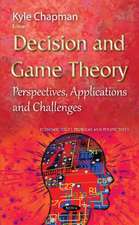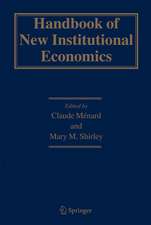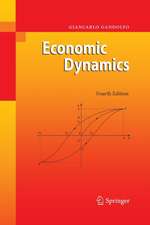Topics in Applied Macrodynamic Theory: Dynamic Modeling and Econometrics in Economics and Finance, cartea 10
Autor Peter Flaschel, Gangolf Groh, Christian Proano, Willi Semmleren Limba Engleză Hardback – 14 aug 2008
Toate formatele și edițiile
| Toate formatele și edițiile | Preț | Express |
|---|---|---|
| Paperback (1) | 955.70 lei 6-8 săpt. | |
| Springer Berlin, Heidelberg – 23 noi 2010 | 955.70 lei 6-8 săpt. | |
| Hardback (1) | 961.55 lei 6-8 săpt. | |
| Springer Berlin, Heidelberg – 14 aug 2008 | 961.55 lei 6-8 săpt. |
Din seria Dynamic Modeling and Econometrics in Economics and Finance
- 18%
 Preț: 1824.95 lei
Preț: 1824.95 lei - 15%
 Preț: 633.53 lei
Preț: 633.53 lei - 15%
 Preț: 641.03 lei
Preț: 641.03 lei - 15%
 Preț: 636.80 lei
Preț: 636.80 lei - 15%
 Preț: 637.59 lei
Preț: 637.59 lei - 15%
 Preț: 650.19 lei
Preț: 650.19 lei - 15%
 Preț: 648.24 lei
Preț: 648.24 lei - 15%
 Preț: 645.47 lei
Preț: 645.47 lei - 15%
 Preț: 642.18 lei
Preț: 642.18 lei - 15%
 Preț: 651.34 lei
Preț: 651.34 lei - 18%
 Preț: 947.04 lei
Preț: 947.04 lei - 15%
 Preț: 645.79 lei
Preț: 645.79 lei - 18%
 Preț: 1130.14 lei
Preț: 1130.14 lei - 18%
 Preț: 1234.32 lei
Preț: 1234.32 lei - 18%
 Preț: 895.58 lei
Preț: 895.58 lei - 18%
 Preț: 729.23 lei
Preț: 729.23 lei - 18%
 Preț: 945.79 lei
Preț: 945.79 lei - 18%
 Preț: 887.86 lei
Preț: 887.86 lei - 24%
 Preț: 793.10 lei
Preț: 793.10 lei - 18%
 Preț: 1008.91 lei
Preț: 1008.91 lei - 15%
 Preț: 634.00 lei
Preț: 634.00 lei -
 Preț: 453.21 lei
Preț: 453.21 lei - 15%
 Preț: 647.59 lei
Preț: 647.59 lei - 18%
 Preț: 946.87 lei
Preț: 946.87 lei - 15%
 Preț: 640.37 lei
Preț: 640.37 lei - 15%
 Preț: 640.71 lei
Preț: 640.71 lei - 18%
 Preț: 952.89 lei
Preț: 952.89 lei
Preț: 961.55 lei
Preț vechi: 1172.62 lei
-18% Nou
Puncte Express: 1442
Preț estimativ în valută:
184.05€ • 199.99$ • 154.70£
184.05€ • 199.99$ • 154.70£
Carte tipărită la comandă
Livrare economică 21 aprilie-05 mai
Preluare comenzi: 021 569.72.76
Specificații
ISBN-13: 9783540725411
ISBN-10: 3540725415
Pagini: 542
Ilustrații: XX, 512 p. 94 illus.
Dimensiuni: 155 x 235 x 33 mm
Greutate: 0.91 kg
Ediția:2008
Editura: Springer Berlin, Heidelberg
Colecția Springer
Seria Dynamic Modeling and Econometrics in Economics and Finance
Locul publicării:Berlin, Heidelberg, Germany
ISBN-10: 3540725415
Pagini: 542
Ilustrații: XX, 512 p. 94 illus.
Dimensiuni: 155 x 235 x 33 mm
Greutate: 0.91 kg
Ediția:2008
Editura: Springer Berlin, Heidelberg
Colecția Springer
Seria Dynamic Modeling and Econometrics in Economics and Finance
Locul publicării:Berlin, Heidelberg, Germany
Public țintă
ResearchCuprins
Period Models, Continuous Time and Applied Macrodynamics.- Period Models, Continuous Time and Applied Macrodynamics.- The Closed Economy.- The AS–AD Framework: Origins, Problems and Progress.- Wage–Price Dynamics: Basic Structural Form, Estimation and Analysis.- Estimation and Analysis of an Extended AD–AS Model.- Linking Goods with Labor Markets: Okun’s Law and Beyond.- The Open Economy.- Exchange Rate and Stock Market Dynamics in a Two-Country Model.- Macroeconomic Imbalances and Inflation Dynamics in a Mundell-Fleming-Tobin Framework.- Currency Crises, Credit Rationing and Monetary Policy in Emerging Markets.- Keynesian Dynamics and International Linkages in a Two-Country Model.- Outlook: Supply Constraints in Demand-Driven Macromodels.
Textul de pe ultima copertă
This book presents topics in applied dynamic macrotheory for closed and open economies. The authors give an advanced treatment of macroeconomic topics such as the Phillips curve, forward and backward looking behavior, open economy macrodynamics, structural macroeconometric model building as well as the empirics of Keynesian oriented macro models. They start from the closed economy and consider open economies for fixed and flexible exchange rate systems with free international capital flows later on. The dynamics of open economies in the context of interacting two country models are treated as well. The macrofounded approach extends and integrates non-market-clearing traditions in macrodynamics. It is compared to New Keynesian approaches which are generally rigorously microfounded, but often neglect to study macroeconomic feedback mechanisms (that may be stabilizing or destabilizing).
The chapters - though representing a coherent whole - are self-contained and can be used independently of each other.
Tired of RAIOM (Rational Agent Intertemporally Optimizing Model)? Then this is the book for you, a book on macroeconomics in the Keynesian (without any New-, Post-, Neo-, or other prefix) tradition. Fan of RAIOM? Then this is the book for you, it shows how it is possible to study dynamics without jumping on stable arms (or manifolds). A bonus is the econometric study of the theories set forth by the authors. All (macro)economists should read this book.
Professor Giancarlo Gandolfo, University of Rome "La Sapienza"
... The authors succeed in providing substantial insight into macroeconomic models. Both the models and the analysis of actual references cited are alone worthy of attention. This text is worthy of substantial effort to absorb and master its insights; not a book to be neglected or casually read.
Professor James B. Ramsey, New York University
The chapters - though representing a coherent whole - are self-contained and can be used independently of each other.
Tired of RAIOM (Rational Agent Intertemporally Optimizing Model)? Then this is the book for you, a book on macroeconomics in the Keynesian (without any New-, Post-, Neo-, or other prefix) tradition. Fan of RAIOM? Then this is the book for you, it shows how it is possible to study dynamics without jumping on stable arms (or manifolds). A bonus is the econometric study of the theories set forth by the authors. All (macro)economists should read this book.
Professor Giancarlo Gandolfo, University of Rome "La Sapienza"
... The authors succeed in providing substantial insight into macroeconomic models. Both the models and the analysis of actual references cited are alone worthy of attention. This text is worthy of substantial effort to absorb and master its insights; not a book to be neglected or casually read.
Professor James B. Ramsey, New York University
Caracteristici
Presents advanced quantitative apporaches to dynamic macromodeling Gives insight into the working and interaction of macrodynamic feedback channels Offers theoretical, empirical and numerical treatment of small and large macromodels Includes supplementary material: sn.pub/extras










